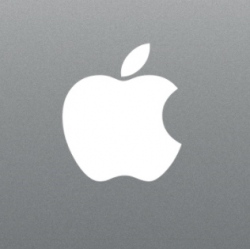
Apple’s revenues for the quarter were up sharply, roughly 20 percent over the year-ago quarter, and Maestri is predicting that an additional $89 billion to $93 billion will flood the company’s coffers during the always-lucrative holiday season. The bad news:
iPhone sales were flat for the past quarter, iPad and Mac sales were down, and the most significant growth came from “Other Products” and services — likely the Apple Watch, Apple Music, and Apple Pay. Moreover, Apple’s growth appears to be coming at least as much from price hikes as from new customers.
2018 wrap-up: iPhone, Services, and Apple Watch
Cook opened the call by discussing the big picture for the year, noting that the company’s seen its highest growth rate in three years this quarter, with the iPhone, wearables, and services driving momentum. Continued strong sales of the iPhone 8, 8 Plus, and X, plus the successful launches of XS and XS Max made that possible, Cook said.
He noted that iPhone XR will bring the A12 Bionic’s breakthroughs to even more users, and iOS 12 has been installed on more systems in its first month than any iOS version ever. Later, Maestri mentioned that the iPhone’s average selling price (ASP) is now a remarkable $793, above even analysts’ estimates in the $750 range.
Sales across basically all of Apple’s services improved, said Cook, with Apple Pay as a standout. Transaction volume tripled year-over-year and generated 4 times the growth rate of PayPal Mobile, surpassing it in transactions. In the U.S., 71 of the top 100 merchants now support Apple Pay, and Apple is trying to replace the wallet for student IDs, plus Apple Pay Cash is the highest-rated person-to-person payment system.
Maestri added that there are now 330 million paid subscriptions on Apple’s platform, up 50 percent over a year ago, and 30,000 paid subscription apps are now out there, with the largest offering less than 0.3 percent of total services revenue.
Wearables, including Apple Watch, AirPods, and Beats products, showed huge growth. Cook said that Apple Watch Series 4 has seen great consumer response, and the ECG app is coming “later this year” to let users take electrocardiograms at any time; earlier Watch models will soon gain support for arterial fibrillation detection, as well.
Cook also wanted to point out two items outside the financial statements: Over 5,000 schools worldwide are now using Apple’s free coding curriculum: Everyone Can Code. Educators in over 350 schools are now using Everyone Can Create, tools that help kids use iPads to be creative. Additionally, Apple says it’s proud to be using 100 percent renewable energy in its facilities and 100 percent recycled aluminum in some of its products.
Nearly half of iPad buyers during the quarter were new to iPad, Maestri noted. On the enterprise front, over 450 airlines have adopted iOS to help make flights safer, and some are using it for superior passenger experiences. And iOS devices are increasingly being used in retail to provide superior shopping experiences. Apple’s deal with Salesforce will bring its devices even deeper into the enterprise market.
Major accounting changes
Starting in December, Maestri noted that Apple will no longer break down unit sales for iPhones, iPads, and Macs. Additionally, he said Other Products will become “Wearables, Home, and Accessories” to better capture the products in that category. The company will also be reclassifying its accounting in a manner that will change the way it recognizes bundled products and services, in compliance with new accounting rules. Apple will disclose both the revenues and costs for providing services, in addition to products. Revised financial statements on this will follow.
